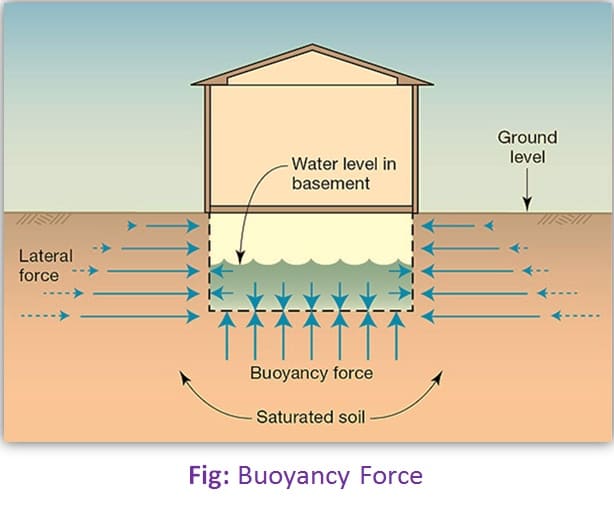Buoyancy:
The ability of a liquid or a gas at rest to exert an upward force on a body immersed in that fluid is called Buoyancy. A body appears lighter when it is immersed totally or partly in a liquid or a gas.
Example: A pitcher full of water appears lighter when immersed in water. On drawing a bucket full of water from a well, it appears lighter as long as it is inside water. But once it rises above water, it appears heavier. In no case does the actual weight of a body decrease, but the body experiences an apparent loss of weight.
Buoyancy Force:
The upward thrust exerted by a liquid or a gas at rest on a body partly or totally immersed in it that is called Buoyancy Force.

Characteristics of Buoyancy Force:
The Characteristics of buoyancy force are given below:
1. The buoyant force depends on:
-
i. The volume of the immersed portion of the body.
ii. The density of the displaced liquid
iii. The acceleration due to gravity.
2. The buoyant force acts in the direction opposite to the weight of the body.
3. For a totally immersed body, the buoyant force does not depend on the depth up to which the body is immersed inside the liquid.
4. If the volume of a body is kept unaltered, then the buoyant force on a totally immersed body does not depend on the size, physical state, and mass of the body. But for a partly immersed body, the buoyant force on it does not depend upon its size or physical state, but depends on its mass.